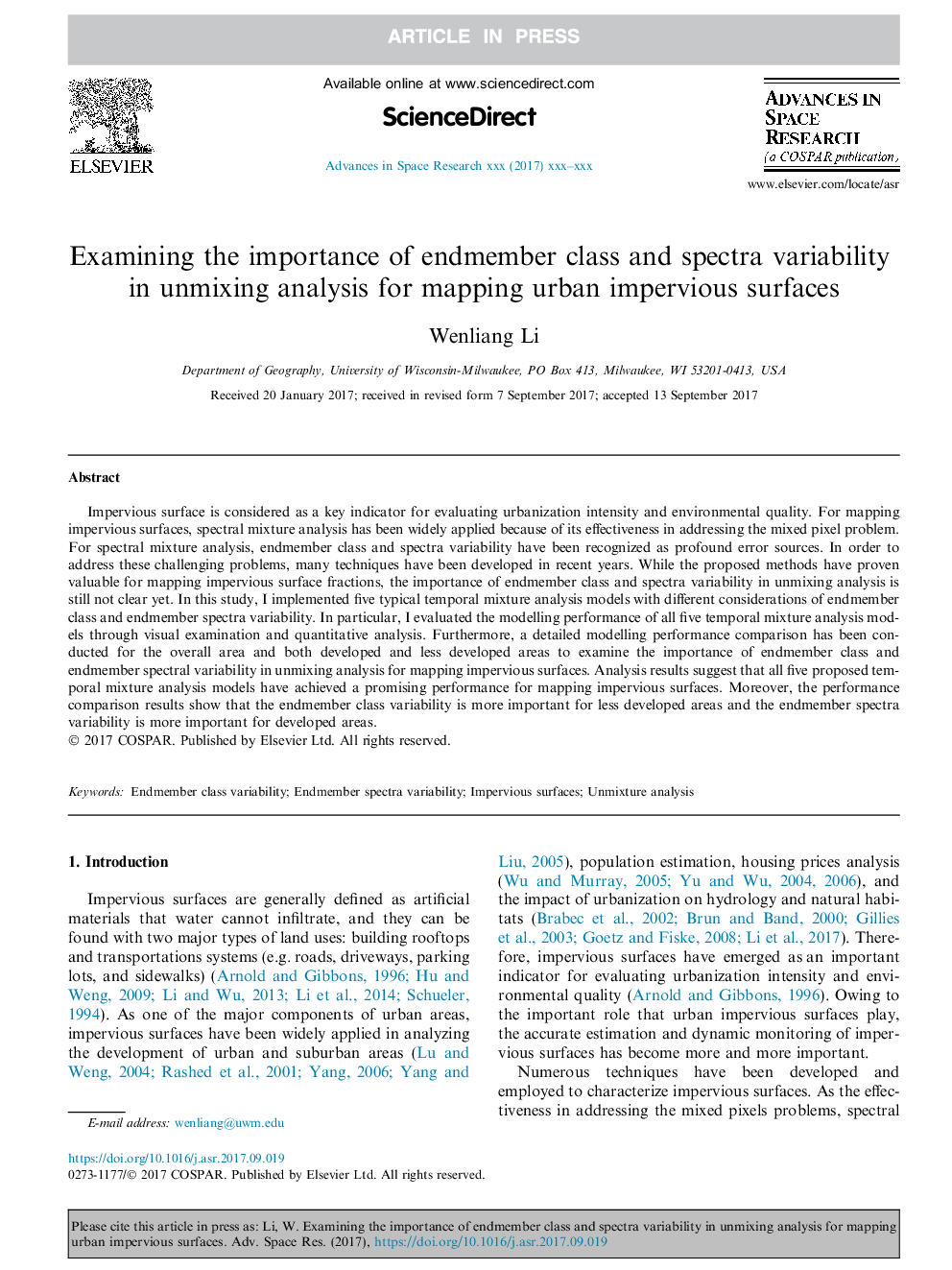| Article ID | Journal | Published Year | Pages | File Type |
|---|---|---|---|---|
| 8132603 | Advances in Space Research | 2017 | 13 Pages |
Abstract
Impervious surface is considered as a key indicator for evaluating urbanization intensity and environmental quality. For mapping impervious surfaces, spectral mixture analysis has been widely applied because of its effectiveness in addressing the mixed pixel problem. For spectral mixture analysis, endmember class and spectra variability have been recognized as profound error sources. In order to address these challenging problems, many techniques have been developed in recent years. While the proposed methods have proven valuable for mapping impervious surface fractions, the importance of endmember class and spectra variability in unmixing analysis is still not clear yet. In this study, I implemented five typical temporal mixture analysis models with different considerations of endmember class and endmember spectra variability. In particular, I evaluated the modelling performance of all five temporal mixture analysis models through visual examination and quantitative analysis. Furthermore, a detailed modelling performance comparison has been conducted for the overall area and both developed and less developed areas to examine the importance of endmember class and endmember spectral variability in unmixing analysis for mapping impervious surfaces. Analysis results suggest that all five proposed temporal mixture analysis models have achieved a promising performance for mapping impervious surfaces. Moreover, the performance comparison results show that the endmember class variability is more important for less developed areas and the endmember spectra variability is more important for developed areas.
Keywords
Related Topics
Physical Sciences and Engineering
Earth and Planetary Sciences
Space and Planetary Science
Authors
Wenliang Li,
